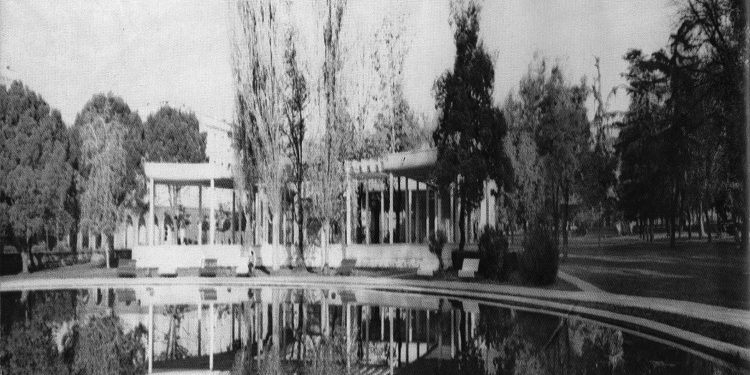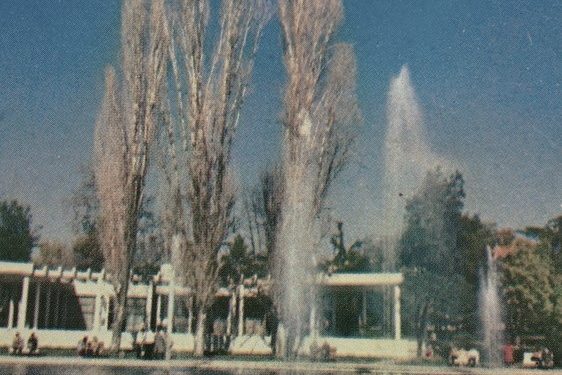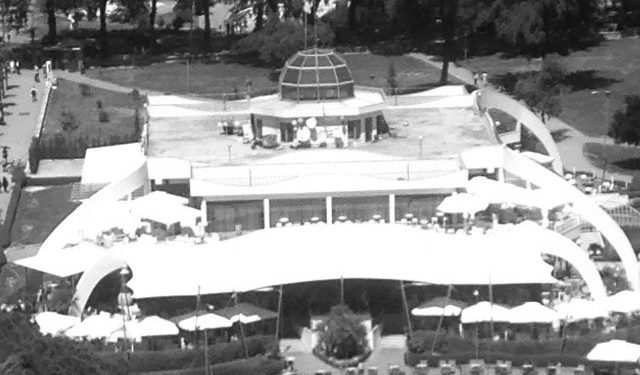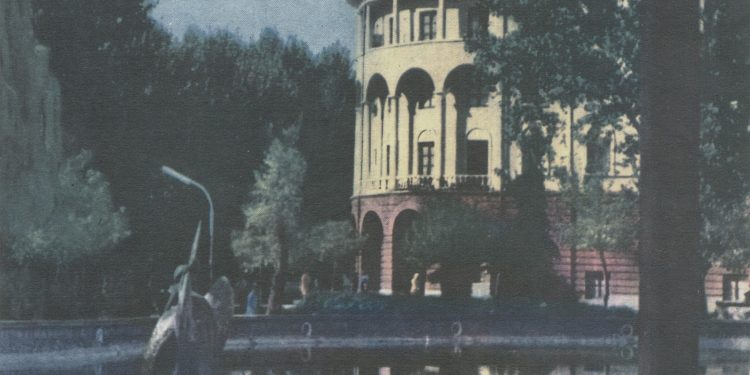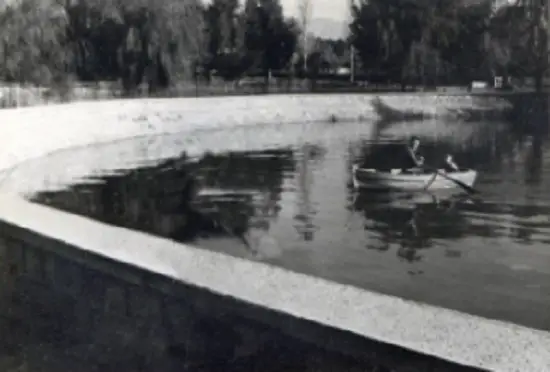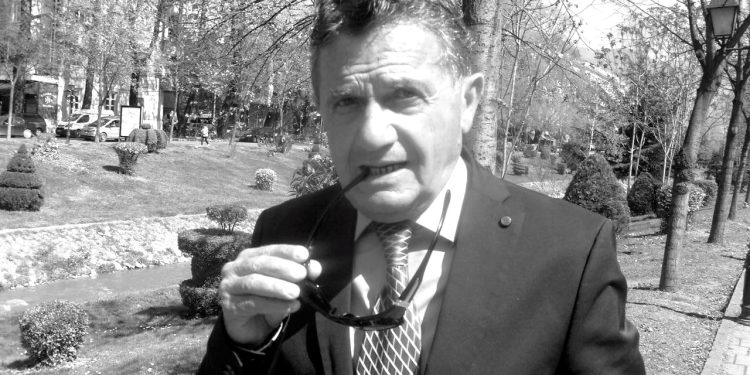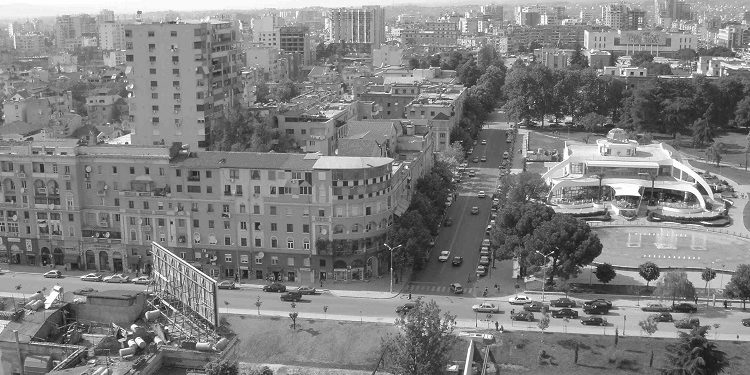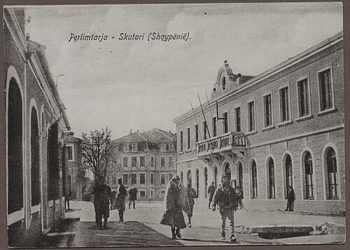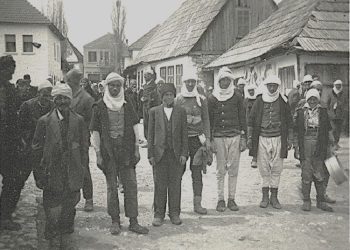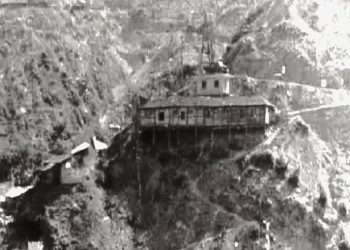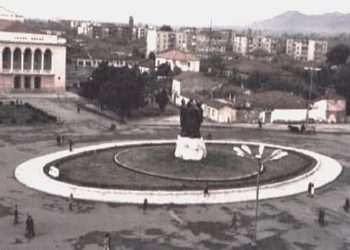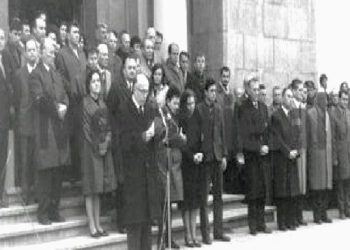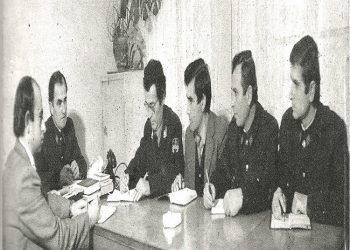From Uvil Zajmi
Memorie.al / Even today, people meet there. It is the easiest point to reach and the most popular, not only for the people of Tirana, but also for those who come from the districts. “Youth”, but also “Taiwan”, these were the two names that accompanied the largest park in the center of the capital. The first early, since it was the youth who built it, while the second, not official, but put after the 70s, by the capital city, although it had no connection with the remote island. The history of that complex starts from the night when, with voluntary action, trees were planted, then the construction of the bar and the lake, a coexistence without a single moment of separation from each other. Attendance, songs, dances with foreigners, boat trips, love stories with tourists from eastern countries and I was curious, why was it called “Taiwan”?. As Sotir Qirjaqi, a character known as the “Marathonomak” of Tirana, who spent his childhood near that Tirana Park, tells it today!
The idea for a popular park
After the 1945s, in the area of “Shallvareve”, known more for the football field, together with the beginning of the construction of the block of buildings, the idea of building a large park was thrown. In 1949, students and lecturers of the Higher Agricultural Institute, within 48 hours, with voluntary action, planted many trees. In the shape of a rectangle, 240 m. x 170 m., from the north there was the “Nikolica” kindergarten, the ministry and a little further, the “Brigada” Cinema, known for showing Russian films and the trial of Teme Sejko; from the east it paralleled the boulevard and the “Dajti” Hotel, from the west, the “Shallvareve” Block and Lana to the south. This modern complex for the time and for the capital was a proof that the “New Albania” was being built.
The name “Youth”, she built it
The park had incredible greenery and, mainly in spring-autumn, it was bursting with life. Wild chestnuts rose by the side of the clean alleys. All the time, there was freshness, which made it frequented throughout the day, until the late hours of the night. But even when the winter was sad, with bad weather, frost, fog, there was no lack of all kinds of birds, while the leaves were falling. Surrounded by trees, flowers, everything made staying or passing by pleasant, relaxing. The park, which was named “Rinia” because she was the one who built it, was surrounded by a stone curb, 50 cm. high. For many years, on its borders. the citizens of Tirana, students, and in the spring and summer period are sitting. Served as a fashion parade.
The curbs along the boulevard were the most frequented by fans of the tour, who stayed there in groups until the evening. Those in front of “Shallvare” were filled more with family members, while the less favorite were the north-south curbs. There was no statue inside the park, although in the north-eastern corner, Stalin stood and Lenin in front of him, very close to a block with graves in black marble, of several personalities of the Anti-Fascist National Liberation War and after it, such as: Nako Spiru, Alqi Kondi , Vasil Shanto, Qemal Stafa, Gogo Nushi, which stayed there for many years, until they were removed, to be sent to the “National Cemetery”.
Entertainment complex, the land of lovers
Based on the structure, that environment has served as an entertainment complex for all ages. It was used by the gathered sportsmen who slept in the “Dajti” Hotel, Albanians and foreigners, footballers, athletes, boxers, etc., who went out running in the early hours of the morning, along Lana, then in its alleys. “Rinia” Park was also known as a meeting place for young people in love, but also for the friendships and “love stories” of the capital’s boys with tourists, mainly East German, Polish and Russian girls, organized in the “Dajti” Hotel “, or sailors who came from Durrës and foreign aviators, who preferred the fun environment offered by the park and bar. Many love letters were thrown on the flowers, near the trees that were exchanged by the lovers.
Park buildings
To complete the complex in the space inside it, a flower garden, a bar or pub, a one-story building, not with sleeping facilities, but which was frequented until late in the evening, while from the south, a lake or pool, as they told him. Inside the park there were public bathrooms, men and women, which were looked after by two employees, a man and a woman. Many can still remember the Sultan. Half underground, they were adjacent to the bar, on its western side. Built in 1968, they have been operating for a long time. On the side of “Shallvare”, there was a space that separated the curb, which was used for citizens to go down to the park by means of some concrete steps.
Bar, dancing, tango and western music
The “Dajti” branch, for many years, was also the bar of the “Rinia” park. When the “Dajti” restaurant was full of foreign customers, some of them were sent to the one in the “Rinia” park, which was originally a real classic pub, with a hall with 10-12 tables and customers his favorite. A luxurious restaurant, it had a universal kitchen, with cooks, waiters inherited from the time of Italy, among them P. Prillo, M. Kanini, Jani, Fatimja, Begzo, etc., who served inside and outside, with napkins placed in arm. A wooden counter and in the corner an orchestra, placed on a dome, in a half room of special wood, with its back to the lake.
The bar was surrounded by a low wall and wooden railings, painted green that separated it from the passers-by, with the entrance from the east, while the one from the west served for the staff. In the outdoor setting, there was a circular summer dance floor, located between the bar and the orchestra, with a few tables mainly in the hot summer period. Inside it there were waiting rooms, where in many cases they were used for meetings of Foreign Trade employees, foreign officials, with Albanian ones, etc. Then, the pub underwent a change, transforming into a restaurant-bar-patisserie.
Lake, boating
Designed in the shape of a bean, the lake has been an integral part of the flower garden and pub, even in a straight line north-south with it. It was conceived as a connecting piece, to beautify the park, with water, but not a fountain, with a stone border, with a small pelican statue inside it. With parachute paint, the foundation was made of leveled stones and two wells, a pump station, which served for the circulation of water and its discharge in Lana. The lake was a fun place for families. In its beginnings, it also served for wooden boat rides to swim, and then there was a long period of abandonment, when football was also played inside it. Until the complete restoration of the Park, in 1984, when the lake was transformed into a modern colorful fountain, the pool was filled with water sporadically and then abandoned!
Park buildings
To complete the complex in the space inside it, a flower garden, a bar or pub, a one-story building, not with sleeping facilities, but frequented until late in the evening, was built, while from the south a lake or pool, as they said. Inside the park were also male-female public baths, which were looked after by two employees, a man and a woman. Many can still remember the Sultan. Half underground, they were adjacent to the bar, on its western side. Built in 1968, they have been operating for a long time. On the side of “Shallvare”, there was a space that separated the curb and served for citizens to go down to the park by means of some concrete stairs.
Bar, dancing, tango and western music
The “Dajti” branch, for many years, was also the bar of the “Rinia” park. When the “Dajti” restaurant was full of foreign customers, some of them were sent to the one in the “Rinia” park, which was originally a real classic pub, with a hall with 10-12 tables and its customers from favorite. A luxurious restaurant, it had a universal kitchen, with cooks, waiters inherited from the time of Italy, among them P. Prillo, M. Kanini, Jani, Fatimja, Begzo, who served inside and outside with napkins placed by their side. A wooden counter and in the corner an orchestra placed on a dome, in a half room of special wood, with its back to the lake.
The bar was surrounded by a low wall and wooden railings painted green, which separated it from the passers-by, with the entrance from the east, while the one from the west served for the staff. In the outdoor environment there was a circular summer dance floor, located between the bar and the orchestra, with a few tables mainly in the hot period. Inside it there were waiting rooms, where in many cases they were used for meetings of Foreign Trade employees, foreign and Albanian officials, etc. Then, the pub underwent a change, transforming into a restaurant-bar-patisserie.
Named after a painter from the capital
There may be many who ask why even today that country is known as “Taiwan”. There was no official baptism, nor a political reason, for the Albanian-Taiwanese brotherhood. In the 70s, the Eastern part of Far Asia was involved in the China-Taiwan conflict and every day, the radio, the Albanian press, the newspapers “Zëri i Populli”, “Bashkimi”, etc., accompanied the situation with comments about the event. Influenced by this atmosphere, the name of the bar also originated.
Since in the winter, from the rain, it was surrounded on all four sides by water, and to enter inside, bricks were placed that served as a bridge, creating the idea of a small island, as well as the great noise what was happening with Faraway Taiwan, excited the imagination of a group of attendees, when one of them, a well-known painter in Tirana, would say: “how it’s done in Taiwan”. Originally used in close circles of friendship, among artists, intellectuals, saying: “let’s meet, drink coffee … or wait for me in Taiwan”, in the years that followed, this name became more functional. Although it has nothing to do with distant “Taiwan”, not surrounded by water, if you see it from above, this bar really offers the view of an island, standing alone in that green environment.
Taiwanese in search of the island
The name “Taiwan” has aroused a special interest, especially for tourists coming from Far Asia, mainly Taiwanese, when from “Google”, after getting to know Tirana; you are informed that in the center of the city, there is a bar named “Taiwan”. “Based on this very curious fact for them, the first action when they are in the capital, with maps in hand, they want to go to this bar, to get to know the history and origin of the name. They move around, but they have a hard time finding it,” says a tourist companion. “And this is for a very interesting fact, since the name “Taiwan” does not appear in any visible place of the bar. There are other names, only “Taiwan”.
Sotir Qirjaqi, known as a marathon runner, lived in “Shallvaret” and in that park, spent his childhood and youth. It preserves memories from the night when the students planted the trees, the songs they sang, the boats and the lake where the children of Tirana learned to swim. Then, the pub, the orchestra, the films shot, the tourists, even the love and intimacy that the park offered.
Mr. Qirjaqi, how do you remember your adolescence at that park?
I think the park has gone through three phases of colossal changes. Building with Russian style and flourish, dominated by technology to keep it green and green. After 1961 and the political blow to the Soviet Union, the park lost its confidentiality. Then, the next phase, the one in the 80s, when it was transformed into a western park, and the third, after the 90s, when it was completely destroyed.
Do you remember the action days?
I was young, but I remember some moments. Even a song that the students sang while working with this text: “You young and young women / our number is great / against fascist tyranny / the whole world is fighting / There we work to drain the sweat / that we build the New Albania “. Among them were the lecturers V. Shqau, I. Nako, S. Rusi, etc., who contributed to the construction of that park.
Was the bar frequented? Do you remember any famous figures?
Being in the center of the capital, in the evening, many intellectuals, well-known names came. After the shows, you can find artists, composers, dancers, from Avni Mula, Pjetër Gaci, Česk Zadeja, Pamajot Kanaçi, Besim Zekthi, Nikolin Xhoja, Aadem Rada, Bashkim Stërmasi, etc., writers, athletes as well, but also doctors and professors.
It was in the Albanian style, like everywhere, in every city things of this nature worked, a flower garden and a bar, where people could have fun and often those environments created the idea, as if it was disconnected from the life of the citizens. We children surrounded “Taiwan”, listening to the orchestra, it smelled like chops…! A bottle of beer cost from 22 to 30 lek (old). In many cases, the sounds of the orchestra had become a concern for the families of “Shallvareve”, who complained about the music that continued until the late hours of the night.
Albania was an isolated country, however, in “Taiwan” there was an orchestra, music…, and what did you think?
Dinner in the restaurant was accompanied by an interesting orchestra, with jazz, guitar, accordion, sax, etc. Tonin Shala, Fredi, on the piano, Meti with a mustache, or Fitnete Rexha’s husband, Mahmut Qosja, Platoni, etc., were some of the instrumentalists. I remember that inside the jazz, there was a lamp for lighting, while above the skin, a scarf to dampen the noise of the sticks. There were imitations, Russian and Italian songs, among them “Mama son’tanto felice”, etc. Around the mid-1960s and 1970s, melodious Spanish songs were performed, such as the famous “Esperanca”, which was also sung by Vaçe Zela.
But also Albanian songs from festivals, songs from Korça, Shkodra. I remember “My Skoda hugs you, my sheep don’t be afraid”, “Cuca e Radohima”, “Faces with moles”, etc., which were performed by the singers Reshat Kasapi, Lin Syla, Pjetër Gjergji, Bujar Deliallisi, Kasem Hallulli, Bajrami, a former student in Poland, with a Polish wife, like Ray Charles, sang with his eyes closed. Or Nora, Gita, Brixhida, who were very popular in Tirana.
What about dancing, was there?
Yes definitely, There was a dance floor, where tango, twist was danced and which was frequented by tourists from Eastern Europe, Poles, Czechs, etc. By the early 70s, it was sung and danced to endlessly.
Do you remember a story that left an impression on you?
I would remember a sad story. It happened in 1956, it was a spring day. The children of the lake, of “Shallvare”, in search of adventures, to imitate the actors of Russian films, or Tom Sojer, often passed by the “Dajti” Hotel, or entered the underground tunnel, across Lana, to get to the “Qemal” stadium Staff”. Thus, in front of the Orthodox Church today, without knowing what it was, and driven by curiosity, they disturbed an object, which cracked. It was an Italian bomb that had been left there in that area. Several children were injured and unfortunately, Arben Dine, a friend of mine, lost his life.
Shall we talk a little about the lake?
The first period, from the years ’51-’58, was surrounded by railings, wire netting, with an excellent filtration system with the water that was discharged into Lana. Xelil Qinami, the guard, stood at the door and the entrance cost 5 Lek. Four wooden boats were put in, with paddles for cruising. One hour cost 10 ALL, while half an hour cost 5 ALL. Often, in those years, the leaders of the state passed by and the curb were also used to sit down. Then, over the years, they returned it to the lake, where the children bathed.
Was swimming taught there?
Since it had a depth that started from 60 cm., it has been the place where children from all over Tirana, from the districts of the Palace of Pioneers, have learned to swim regularly, accompanied by teachers, such as; Maqo Kodra, etc. The loot was left in the compressor room and its frequenters were also the children of Russian families, working in Tirana. They gave it life when they came, they also had a school where they taught, a building that was located in front of the “Pyramid” that is today, on the eastern side.
What happened to him later?
The second period, that of the early 60s, it was abandoned, not maintained and children rarely bathed in the now stagnant water. Then, it was emptied and football was played inside it, with small gates, placing grass pleats in the goalkeeper’s area. The matches were accompanied by fans, passionate people who sat on the curbs surrounding it. Even with skates, we played there.
And yet, later it had another shine, didn’t it?
Until the beginning of the 80s, like the park, the bar, now turned into a popular bar-patisserie-restaurant, goes through a period of calm, it became serious, until 1984, when the engineer Faik Alimehmeti, designed a modern park, no longer in the Russian style, but with squares, which gave it a European look, which the Green Construction Company would take care of. All new asphalt walkway, wooden benches, lighting, and the lake was transformed into a modern, colorful fountain with a water system from underground.
How did you experience the 90s?
Here begins the period associated with the occupation of the park, with over 140 kiosks located within it. There is no more greenery, no more fun, but a dilapidated, unfun environment. They even started trading, selling places for their placement, even inside the lake or the fountain, they tried to set up kiosks, but they couldn’t. /Memorie.al





